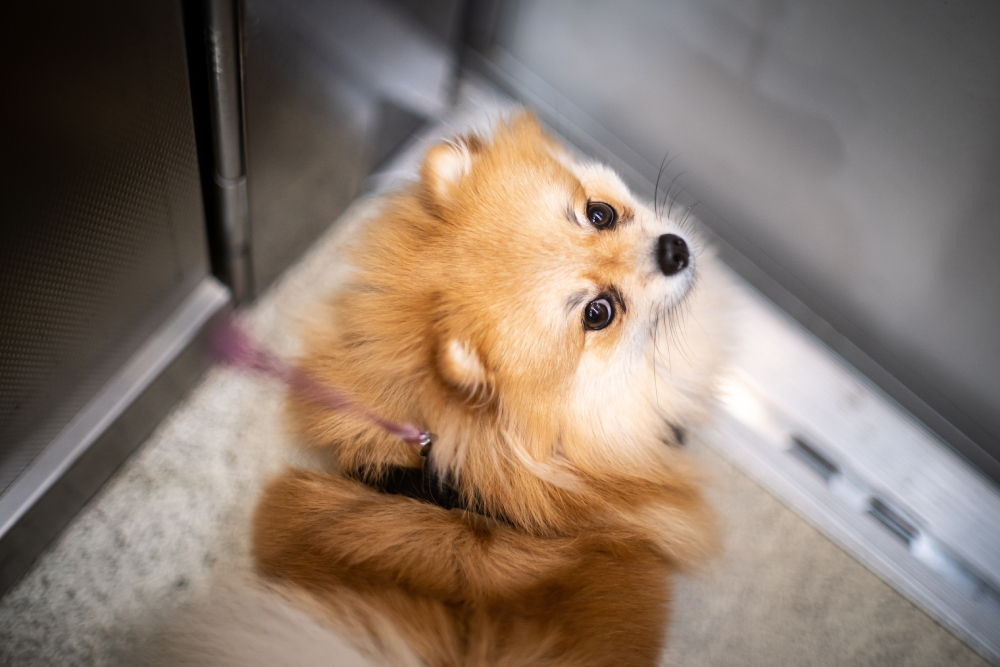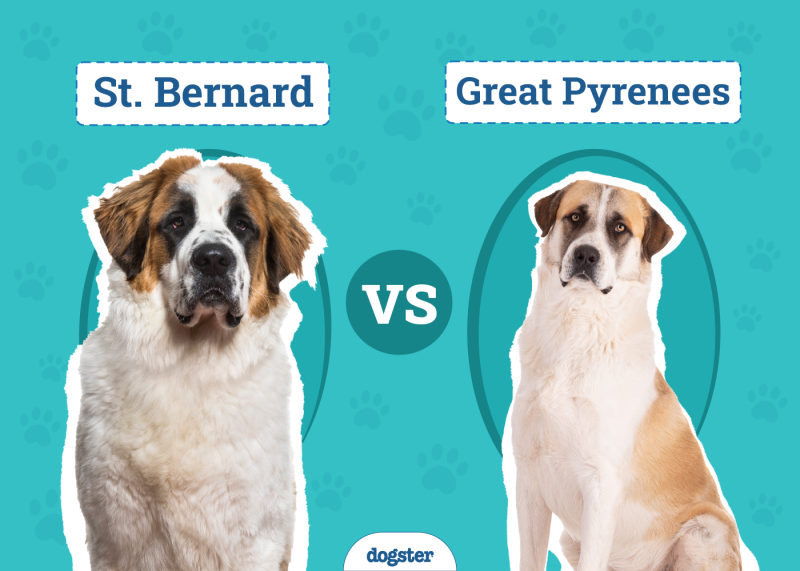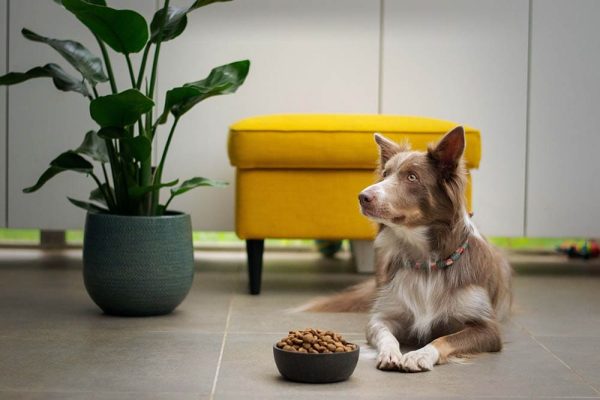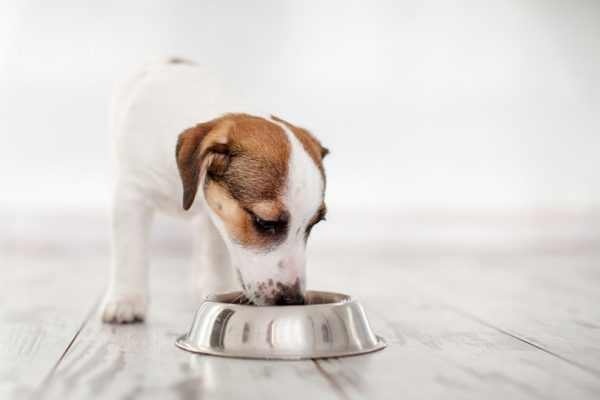In this article
Dogs are intelligent animals with powerful senses and a strong awareness of their environment. They often surprise us with their understanding of the world around them, but one concept that they may not be able to grasp is what an elevator does.
While dogs might not understand elevators fully, they can adapt to them and comfortably use them for navigation over time. Keep reading as we look into what a dog might experience when they get on an elevator.

A Dog’s Perception of Elevators
While a dog may not understand how an elevator works or even what’s happening when the door is closed, their senses can give them a clue that they are actually moving. Although they can hear that the mechanics are operating, they don’t understand what that means. They may be able to feel the vibration and movement or gentle nudges as the elevator changes position, with some dogs taking a more firm standing posture in order to stabilize themselves.
Through repeated exposure in a calm and rewarding manner, a dog can form positive connections between entering an elevator and a specific outcome and might even associate it with going for a walk, visiting family, or another fun adventure.
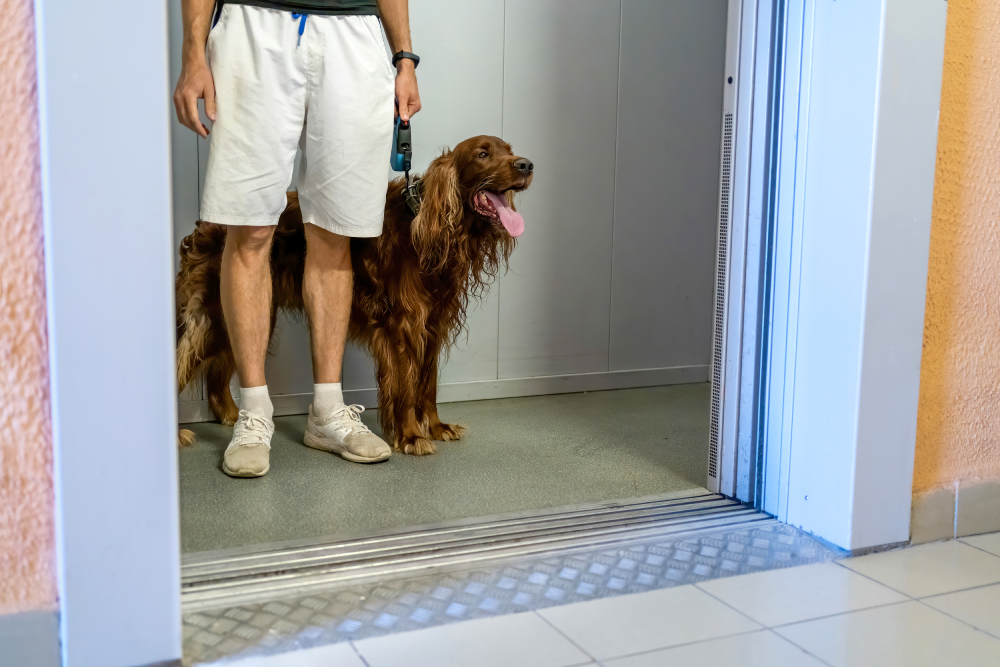
Why Is My Dog Scared of Elevator Doors?
Many dogs can seem frightened of elevators, especially at first, largely due to the doors that open and close suddenly and often make some noise. Elevator doors and the elevator itself can also be noisy, depending on how old the system is. However, most dogs will become more comfortable with repeated exposure consistently followed by a reward and other forms of reassurance. Start getting your dog used to elevators from an early age.
Tips for Getting Your Dog Used to Riding on an Elevator
- Start by bringing your dog near the elevator without entering it, to let them sniff around and get used to the sounds that it makes.
- If they seem frightened when you get close, reassure them, and provide plenty of positive reinforcement in the form of treats and praise to help them relax, but don’t force them to get too close, or you might scare them more.
- Repeat steps one and two until your pet is relaxed and comfortable around the elevator.
- Desensitize your dog to the elevator doors by practicing opening and closing them while your dog is nearby. Get them to sit and remain so while the door is being opened and closed and reward them with a treat. Repeat this multiple times until they are unphased with the elevator doors opening and closing.
- Once your dog is comfortable with the elevator doors, practice entering and exiting the elevator with your dog on a loose leash, letting them choose the direction rather than pulling them in, while paying close attention to their body language. Reward their calm and relaxed behavior with a tasty treat and spend a few seconds inside if possible. Step back out and try again if your dog seems relaxed, while reinforcing their behavior. If they are scared or unsure, reassure them and give them a break before trying again, or return to the previous step.
- When your dog is confident entering and exiting the elevator, it’s time to take a short ride. Get your dog to sit and reward them for it. Teach them to remain sitting until you tell them it’s okay to stand up and follow you out of the elevator. This way you will avoid your dog rushing out when the elevator door opens, which may startle waiting passengers or your dog may exit on the wrong floor.
- Practice using the elevator with your dog regularly to reinforce their training and build confidence.
- Be patient and understanding, as it can take some dogs a long time to be comfortable riding an elevator.
- Once your dog is comfortable using one elevator, gradually introduce them to other elevators in different locations, as this will help make riding elevators a standard part of their day.
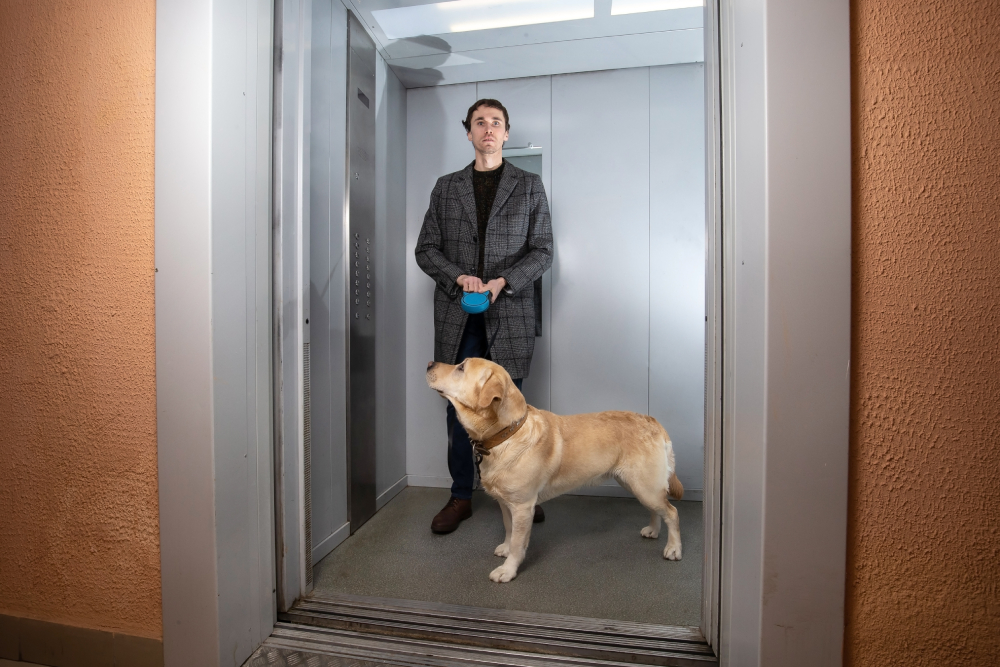

Frequently Asked Questions
Is It Safe to Ride an Elevator With My Dog?
Riding an elevator is perfectly safe for your dog as long as they are comfortable and secure.
Should I Carry My Dog or Let Them Walk into the Elevator?
The choice of whether to carry your dog onto the elevator will depend on their personality and size. Experiment with what works best for your pup to help make them more comfortable. Be mindful of the elevator entrance to make sure their paws do not get trapped, especially in very small and miniature breeds.
Can I Bring My Dog on an Elevator With Other People?
Dogs can ride the elevator with other people if those people are comfortable with it and your dog is kept under control, by being on a leash and next to you, allowing plenty of space for others. The dog will also need to be comfortable around people and have the training to not jump or bark.
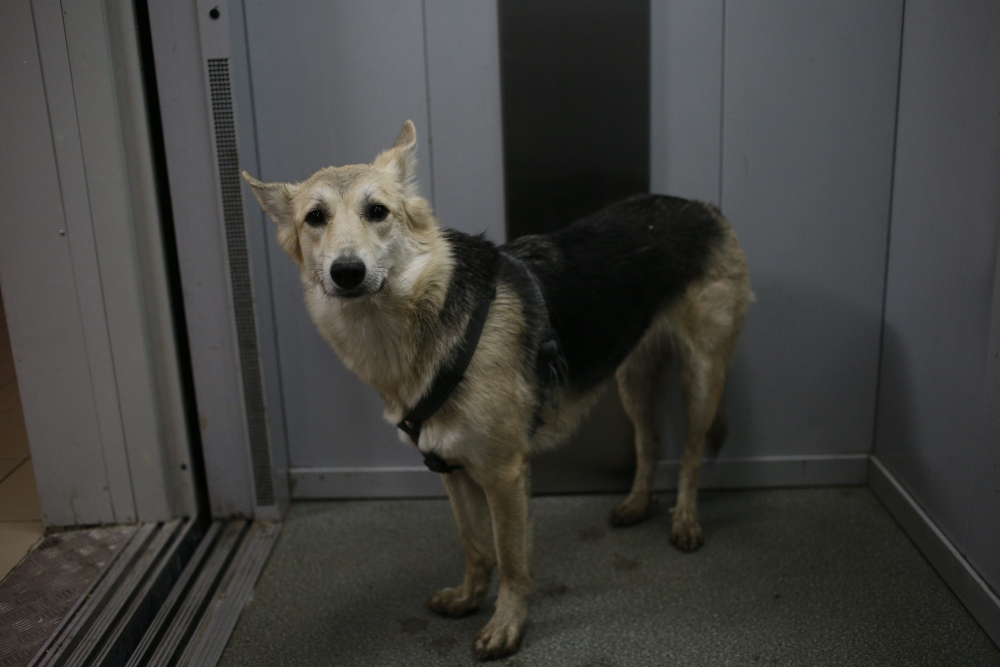
What If My Dog Has an Accident in the Elevator?
Accidents can happen, especially if your dog is afraid or not fully housetrained. It’s a good idea to keep cleaning supplies, which can include paper towels, pet-safe disinfectant, and doggie bags, with you at all times when you are out with your pet. A high-quality enzyme cleaner can also help remove stains and odor. Packing a portable potty pad or taking your dog for a bathroom break before riding the elevator can also help reduce the number of accidents and make them easier to clean up.
Should I Leash My Dog in the Elevator?
It’s recommended to use a leash in the elevator to help ensure your dog’s safety and prevent them from wandering and jumping on other passengers.
What If My Dog Gets Anxious or Stressed in the Elevator?
If your dog gets anxious or stressed in an elevator, the best thing to do is remain calm and provide reassurance through soothing words, gentle petting, and treats, as a means of distraction. Consider taking a break from elevator rides and gradually reintroducing them if your dog is having an especially hard time.

Summary
While it’s unlikely that your dog knows exactly what’s going on whenever they enter and leave an elevator, their many senses will help them at least understand that it is taking them to a different place. They can hear the noise, feel the movement, and likely even be aware that they are farther away from scents that were just close by.
Once they get comfortable riding an elevator, they will understand that there is no danger and learn where the machine is taking them, even if they don’t know how or why. If your pet seems afraid, introduce the elevator slowly with gradually longer rides and plenty of positive reinforcement to help them feel more comfortable.
Featured Image Credit: mmfocus, Shutterstock
